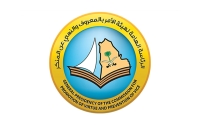
The General Presidency of the Commission for Promotion of Virtue and Prevention of Vice is the entity responsible for enjoining good and forbidding wrong, and to do so with patience and leniency in the Kingdom of Saudi Arabia. It is colloquially called the commission. The start of the General Presidency of the Commission for Promotion of Virtue and Prevention of Vice The General Presidency of the Commission for the Promotion of Virtue and the Prevention of Vice was officially recognized as an i...

The Hajj and Umrah Services Conference and Exhibition is an annual event aimed at enhancing the quality of services provided to pilgrims. It brings together Hajj and Umrah service providers, stakeholders, and officials from within the Kingdom of Saudi Arabia and abroad to discuss developments and practices in serving the pilgrims, in alignment with the objectives outlined in Saudi Vision 2030 . The 2022 Hajj and Umrah Services Conference and Exhibition The inaugural edition, titled 'Transi...

Marwa is a hill that is part of Mount Qaiqaan. It is where pilgrims and Umrah performers complete the ritual of Sa’i . The Sa’i area between Safa and Marwa consists of four floors, containing designated pathways for carts and individuals with special needs and points for cart assembly. Ascending to Marwa on the ground floor is facilitated by a ramp with inclines suitable for the needs of visitors and their carts. Jabal Marwa is sterilized by architectural teams to remove dust and clean the ...
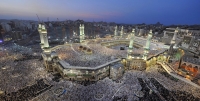
The expansions of the Two Holy Mosques by the Kings of the Kingdom of Saudi Arabia have been driven by both faith-based and practical motivations, starting from the era of the Founding King Abdulaziz Bin Abdulrahman Al Saud . These efforts combined the desire to enlarge the Grand Mosque and accommodate the increasing number of Muslims traveling to Makkah al-Mukarramah and al-Madinah al-Munawwarah each year. The motivations of the Kings of the Kingdom for expanding the Two Holy Mosques are refle...
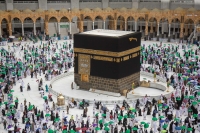
Permission to enter al-Kaaba al-Musharrafa in the Grand Mosque in Makkah al-Mukarramah depends on certain conditions and is limited to specific individuals. It cannot be treated or entered as if it were a public site. Al-Kaaba al-Musharrafa has custodians, Sadanah , who have inherited the key since the time of Prophet Muhammad, peace be upon him (PBUH). The key is currently held by the eldest custodian. They are also referred to as al-Hajabah as they are responsible for carrying the key when al...
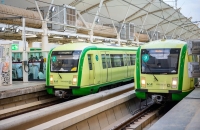
Al-Mashaaer al-Mugaddassah Metro Line has a passenger capacity of 360,000 pilgrims across more than two thousand trips over seven days. The metro, which launched its first trip in 2010, connects the holy sites starting from the Arafat Holy Site to the Jamarat Bridge, passing through Muzdalifah Holy Site. Its railway spans twenty km and operates with seventeen trains, all of which are controlled by automated systems. Each train consists of twelve carriages, totaling 204 carriages, each accommoda...
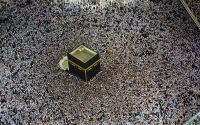
Hajj is the fifth pillar of Islam and one of the Islamic rituals that the Kingdom of Saudi Arabia organizes every year, hosting millions of Muslims from different parts of the world to perform the Hajj rituals in Makkah al-Mukarramah and the holy sites. The performance of the Hajj pilgrimage involves specific acts of worship during the period between the eighth and thirteenth of the month of Dhu al-Hijjah each year, in the Grand Mosque and the holy sites. For its validity, it is required to com...
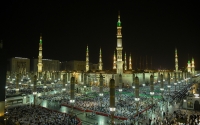
Islam is the final of the heavenly messages, sent by the Seal of the Prophets and Messengers, Muhammad, peace be upon him (PBUH), who called for the worship and oneness of Allah. Its sacred scripture is the Holy Quran. It is embraced by around two billion Muslims worldwide, known for adhering to its teachings and Sharia, and countries that base their legislation and laws on Islam are referred to as 'Islamic states'. The emergence of Islam The first emergence of Islam was in Makkah al-...
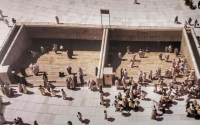
Zamzam water is drawn from the Zamzam well, located east of al-Kaaba al-Musharrafa, in the circumambulation area adjacent to al-Multazam in the Grand Mosque in Makkah al-Mukarramah. It is an ancient well from the time of Ismail, peace be upon him (PBUH). Zamzam water has several names, with 'Zamzam' being the most commonly used. These names include: Maktuma . Madnuna. Shuba'a . Suqya al-riwa' . Rakdat Jibrail. Hazmat Jibrail. Hazmat al-malek. Shifa' suqm. Ta'am tu&...
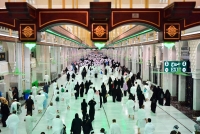
Safa is a mountain located inside the Grand Mosque in Makkah al-Mukarramah in the Kingdom of Saudi Arabia. Pilgrims and Umrah performers begin their Sa'i ritual, the walk between the hills of Safa and Marwa Mountains. Safa is located to the south, slightly towards the east, about 130 m from al-Kaaba al-Musharrafa. It is characterized by its smooth black stones. Safa Mountain is adjacent to the eastern courtyard of the Grand Mosque from the outside. During the reign of King Fahd Bin Abdulaz...
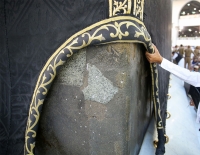
The Yamani Corner is the corner of al-Kaaba al-Musharrada located at its southwestern edge. It precedes the Black Stone during the Tawaf and is directly opposite it. It is one of the corners of al-Kaaba built on the original foundations laid by Ibrahim and Ismail, peace be upon them. Pilgrims are advised to touch the Yamani Corner without kissing it or signaling towards it from afar. One of its notable virtues is that touching it helps to absolve sins. The Prophet Muhammad, peace be upon him (P...
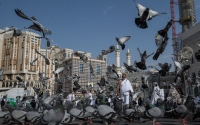
The Pigeons of the Grand Mosque , also known as 'pigeons of al-Hema' and referred to by the residents of Makkah as 'pigeons of the Household,' are the pigeons of Makkah al-Mukarramah and a distinctive feature of the city. These pigeons are treated with special care, and it is prohibited for anyone, whether in the state of Ihram or not, to kill or disturb them. Poets have often sung about the pigeons of the Grand Mosque in their poems, and they have become a symbol in various...